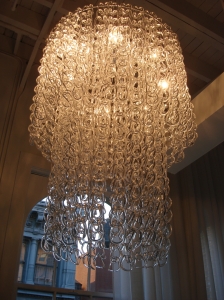 I first became a fan of Barack Obama after reading The Audacity of Hope as he didn’t sound like a typical politician and this was confirmed when a friend bought me Dreams from My Father as a birthday present.
I first became a fan of Barack Obama after reading The Audacity of Hope as he didn’t sound like a typical politician and this was confirmed when a friend bought me Dreams from My Father as a birthday present.
So it is interesting to see some of the same ground covered by a third-party, rather than by Obama himself. In this case the third-party is David Remnick, editor of The New Yorker, and the book is as well-researched and well-written as you would expect.
Not being an American, the most fascinating aspect of the book to me was seeing Obama in relation to the wider context of the issue of race in the US, from the slaves who built the White House to the civil rights movement. I found it shocking to read that :
“In the United States between 1890 and 1920, there were more lynchings than state-sanctioned executions.”
The title of the book comes from a quote by John Lewis, the longtime congressman from Atlanta, and the only speaker still alive from the March on Washington in 1963,where Reverend Martin Luther King, Jr delivered his inspirational ‘I Have a Dream” speech.
Lewis was also one of leaders of the march across the Edmund Pettus Bridge in Selma on March 7, 1965 which came to be known as Bloody Sunday as peaceful civil rights protesters were set on by Alabama state troopers.
The book explains:
“Bloody Sunday was likely the most important act of nonviolent resistance since 1930, when Mahatma Gandhi led seventy-eight other satyagrahis (truth-force activists) in a twenty-three-day march from his ashram to the coastal town of Dandi in protest against the British government and the colonial tax on salt. For millions of Americans, the sight of peaceful protesters being clubbed and gassed in Selma disturbed the foundations of American indifference no less than Gandhi inspired Indians and unnerved the British.
On March 15th, before a joint session of Congress, President Johnson delivered the most ringing endorsement of civil rights ever by a sitting President.”
The day before Obama’s inauguration Lewis said to Renwick :
“Barack Obama is what comes at the end of that bridge in Selma.”
While he was a Senator, Obama kept in his office a framed cover of Life magazine from March 1965 showing the confrontation at Edmund Pettus Bridge which Lewis had signed and given to him as a gift. I had tears in my eyes when I read what happened after Obama’s inauguration:
“Now, at the luncheon following the swearing-in ceremony, Lewis approached Obama with a sheet of paper and, to mark the occasion, he asked him to sign it. The forty-fourth President of the United States wrote, “Because of you, John. Barack Obama.” “





